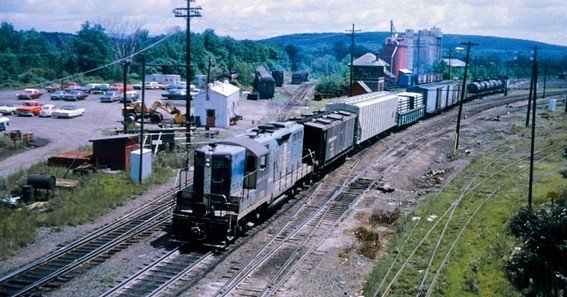For those interested in the history and evolution of regional freight transportation, boston and maine ft serves as an intriguing focal point. This term evokes the storied legacy of the Boston and Maine Railroad and its freight operations, which once played a critical role in connecting New England’s industries and communities. In this blog, we delve into the historical significance, transformation, and prospects of this iconic freight network.
Boston and Maine FT: A Glimpse into History
The Boston and Maine Railroad, often abbreviated as B&M, was once a major force in New England’s transportation scene. Its freight division—commonly recognized under the banner of Boston and Maine FT—was instrumental in moving goods from bustling industrial centers to remote communities. This robust network helped shape the economic landscape of the region during the 19th and 20th centuries.
-
Historical Significance:
The Boston and Maine FT network was key to supporting industries such as textiles, manufacturing, and agriculture. By providing a reliable link between Boston, Maine, and beyond, it enabled the efficient distribution of raw materials and finished products, fueling regional growth. -
Infrastructure and Operations:
Over the decades, the freight operations under Boston and Maine FT evolved with advancements in rail technology. From steam-powered locomotives to diesel engines, these changes allowed the network to increase capacity and improve efficiency, meeting the growing demands of New England’s industrial expansion.
Modern Developments and the Future of Freight
Today, while the original Boston and Maine Railroad has undergone several mergers and transformations, its legacy lives on in modern freight operations across New England. The principles established by Boston and Maine FT—efficiency, reliability, and regional connectivity—continue to influence current freight transportation practices.
-
Integration with Modern Rail Networks:
Many of the routes and logistical frameworks established by Boston and Maine FT have been integrated into contemporary freight systems. These modern networks leverage advanced technology, including real-time tracking and automated systems, to optimize freight movement in today’s fast-paced market. -
Sustainability and Innovation:
As the freight industry shifts toward greener practices, the historical routes pioneered by Boston and Maine FT are being reimagined with sustainable technologies. Innovations such as energy-efficient locomotives and improved rail infrastructure are part of the ongoing effort to reduce the environmental footprint of freight transportation in New England.
Frequently Asked Questions
-
What does “Boston and Maine FT” refer to?
“Boston and Maine FT” refers to the freight operations historically conducted by the Boston and Maine Railroad, a key component in New England’s rail and freight network. -
How did Boston and Maine FT impact New England’s economy?
The freight operations under Boston and Maine FT played a crucial role in supporting regional industries by efficiently transporting raw materials and finished goods, thereby contributing significantly to economic growth. -
What changes have modern freight systems made compared to Boston and Maine FT?
Modern freight systems have integrated advanced technology such as real-time tracking, automated logistics, and energy-efficient locomotives, building on the robust framework established by Boston and Maine FT to improve efficiency and sustainability. -
Is the legacy of Boston and Maine FT still visible in today’s rail networks?
Yes, many of the historical routes and logistical practices pioneered by Boston and Maine FT continue to influence current freight operations and are integrated into modern rail networks across New England. -
Where can I learn more about the history of Boston and Maine Railroad and its freight operations?
For more in-depth information, consider exploring historical archives, dedicated rail museums, and publications focused on New England’s railroad history. Many resources are available online and in regional libraries.
Conclusion
The journey of boston and maine ft encapsulates a rich legacy of innovation, industrial growth, and the evolution of freight transportation in New England. By understanding its history and how its principles are applied today, we gain valuable insights into the future of sustainable, efficient freight operations. Whether you’re a rail enthusiast or a professional in the logistics industry, the enduring impact of Boston and Maine FT offers inspiration and a roadmap for modern transportation solutions.
Keep reading for more information on hornbachers-ad










